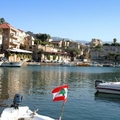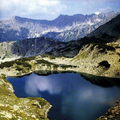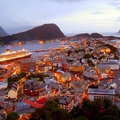About Brazil
Throughout your journey in Brazil, there is one constant presence you will encounter everywhere: its fascinating people. Indians, Portuguese and Africans have brought their contribution to the creation of this nation for over five centuries already. Its wide extension takes your breath away: its surface is larger than that of the U.S. and almost two times larger than that of India –with this size it could count as a continent by itself. In Brazil, there are four time zones, while the Atlantic Ocean coast measures not less than 7000 km. Stretching on over half of the territory of South America, Brazil is the fifth largest country in the world as surface. Brazil's geographic landscape is dominated by two topographical elements: the Amazon, the largest river in the world, and the great central plateau that rises at an altitude of 460 m above sea level, with mountain peaks reaching over 2600 m. A must-see place while visiting Brazil is the Iguassu Falls, higher than the Niagara one and even wider than the Victoria one: 275 falls as total separated by rocks or small islands, surrounded by a lush jungle. Thus, Brazil can be considered a country of contrasts, being associated with the Amazon jungle, Guyana Plateau; the Amazon River which is one of the largest in the world; Rio de Janeiro, samba and the famous carnivals.
The capital city of Brazil, Brasilia
The most important cities in Brazil are Sao Paolo and Rio de Janeiro. Its capital city, Brasilia, is situated on a high plateau, and represents the metropolitan center of the Federal District. The city, viewed from above, is shaped like a butterfly and it is the only city in the world that was built in the twentieth century and has been classified as a World Patrimony site by UNESCO. Among the main attractions in the city there is the Palacio de Alvorada, the official residence of the president, a building famous for its white marble columns and impressive gardens. Itamaraty Palace, also known as Arches Palace, houses an impressive collection of antiquities and works of art. Television Tower has a height of 224 m and offers a splendid view over the city. It houses the Brasilia National Gems Museum, while around it the largest Brazilian traditional crafts fair is run. Legiao da Boa Vontade Temple, pyramid-shaped, is decorated with granite spirals on the floor, while the ceiling is paved with a huge crystal to spread positive energy. Inside, an Egyptian room can be found too, along with an art gallery and a souvenir shop.
Rio de Janeiro
Rio de Janeiro, meaning January River in translation, is one of the most spectacular cities in the world, abounding in vitality. It is located around the waters of Guanabara Bay and is guarded by the Sugar Loaf mountain and the famous statue of Jesus, Cristo Redentor. Nicknamed the Cidade Maravilhosa, the town is famous for its stunning palm-shaded beaches, Copacabana, Ipanema and Mount Corvocado. If you visit Rio de Janeiro, make sure not to miss the world renowned Carnival with is unique atmosphere, which annually attracts millions of tourists from around the world -you will understand why Rio de Janeiro is a city to be visited at least once in your lifetime. Well known are the famous parades of Escolas de Samba and Blocos de carnaval that cross the entire city. The 15th of November Square represents the center of the town and is one of its oldest squares; here you can find handicrafts, pottery, old coins and paintings among many others. The stunning 360-degree panorama from atop Mount Corcovado shows Rio de Janeiro in its full glory, with gorgeous beaches, modern skyscrapers, Maracana stadium, high mountains, lush forests and the Gulf of Guanabra. On this mountain, the statue of Christ the Redeemer, or Cristo Redentor, is located, 36 meters high and 22 meters wide (arms outstretched); the statue is the symbol of the city, and was completed nine years later than it was planned, in 1931, commemorating the independence of Brazil. Almost two times higher than its rival, Pao de Açúcar, Corcovado confirms the fact that no other metropolis is as blessed with natural beauty as Rio de Janeiro is. You can reach the mountain by a taxi, car or train. Trains depart every 30 minutes. Paraty, located a few hours away from Rio de Janeiro, is an old colonial town dating from the seventeenth century. Visitors will have the possibility to admire here cobbled streets, historic buildings with spectacular architecture well preserved up till today.
Sao Paolo
Sao Paolo is the largest city south of the Equator and the main economic, political, industrial, financial and technological centre in Brazil. In the nineteenth century, the city has developed greatly from the sale of coffee, which grows on the red lands of the area, also known as "terra roxa". With an increasing number of immigrants coming from Germany, Italy and Japan in the early twentieth century, the economy has registered a stable period of progress, becoming an important economic and technology after the Second World War. The city features an intense cultural life with its numerous exhibitions, festivals, concerts and dance clubs, easily competing with those of Rio de Janeiro. Parque de Carmo is one of the largest open spaces in town, hosting over 210 species of plants. Every year in July, Festa de Cerejeira is held here, a celebration of Japanese origin. Museum of Art in Sao Paolo exhibits important art works, dating from the Renaissance era up until today. Mosteiro de San Bento is a Benedictine monastery built in the sixteenth century; Nossa Senhora da Luz, is a great example of typical architecture from Sao Paolo, built entirely of clay.
Amazon and its attractions
The largest cities on the banks of the Amazon estuary are Belem and Manaus, not less than 1600 km away from each other, a boat ride between these two cities lasting about five days. Traveling down on Amazon river is a real adventure, as one will have to cross the jungle still unexplored in many parts, where up till now there live wild tribes who still hunt with poisoned arrows. The dimensions of the river - once known as "the Big River" are simply incredible, being the largest river basin in the world. With over 1,000 tributaries, the flow of Amazon is ten times higher than that of Mississippi. By boat, you can explore the river tributaries in the jungle, visit the villages along the river and discover its small islands. A major attraction point is the "wedding of waters" where the dark Rio Negro joins the Amazon (Rio Negro has its source in the proximity of Bage-Brasilia and is the main tributary of the Rio Uruguay river); an evening spent in the company of a local tribe or encountering any of the numerous species of animals that have their habitat here is a unique and unforgettable experience.
Belem
Belem is the stopping point for most tours on the Amazon river, and its exuberant daily market Ver-o-Peso (its name derives from the colonial era) boasts a stunning collection of exotic goods. Snakeskin, turtle soap and eyes of a dolphin may be smuggled products, yet they all have a specific charm in that place, together with other elements of Macumba superstition and Voodoo: aphrodisiacs, amulets, alligator teeth, lizard powder, Boa constrictor skull, and other items you don’t really want to know about now. However, the main attraction of the market is the unusual abundance of fish species, among which Piranha, different meat, fruits and vegetables.
Pantanal
The largest area of spongy soil in the world –Pantanal -is an oasis of water and wildlife, whose variety and number is simply staggering. It is the meeting place of rivers, the last pristine ecological paradise, home to an incredible array of wild animals which are hunted elsewhere or endangered, a fact that most South Americans are not acquainted with. Fallows, Chaco chachalaca, Coatis, Jabiru, Rhea -you have probably never heard about these names or exotic creatures. Other animals such as wolves, jaguars, tapirs and deer are familiar animals to you, but we are quite sure you haven’t met any that large in size as they are here, as the animals grow faster than usually.
Caiman Ecological Refuge
Caiman Ecological Refuge, a combination of farm and ecotourism destination, is an excellent choice to explore a part of Pantanal. Although the 131,000 acres of the refuge are only a small part of the fascinating Pantanal, the possibilities here are endless. Professional guides can organize a tour by feet, boat, car or on horseback. The spectacle of nature continues even at night when millions of fireflies recreate the Christmas atmosphere, with nocturnal hunters everywhere around you. Originally a family mansion, it is an elegant building in Mediterranean style. Together with three other buildings scattered across the wide area, the old mansion hosts guests who come here to immerse themselves in this unique wild nature reserve, yet enjoying air conditioning, swimming pool and delicious food.
Fernando de Noronha
One of the last, least-known and largest ecotourism destinations is the mini-archipelago of Fernando de Noronha, which is guaranteed to offer a great experience. A closely guarded marine national park, whose waters provide a clean ecosystem with visibility over 90 meters throughout the year, it is no wonder that this paradise formed of twenty one islands is considered one of the biggest attractions in the world for diving and snorkeling. Add over 600 Spinner dolphins which have chosen Baia dos Dolfinhos (Dolphin Bay) their home since the 1700s; their famous gravity-defying acrobatics can be viewed when boat touring.
By Maria Morari
Others
Top travel places to visit in 2011 .
The summer has just begun and the most expected holiday of the year is about to start too.
Don't you know yet where to head on to have an adventure for a life or simply an amazing time? Check out our suggestions for the best travel places not to miss this year!





